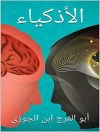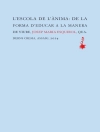This book critically analyses experiences with bioethics education in various countries across the world and identifies common challenges and interests. It presents ethics teaching experiences in nine different countries and the basic question of the goals of bioethics education. It addresses bioethics education in resource-poor countries, as the conditions and facilities are widely different and set limits and provide challenges to bioethics educators. Further, the question of how bioethics education can be improved is explored by the contributors. Despite the volume of journal publications agreement on bioethics education is rather limited. There are only few examples of core curricula, demonstrating consensus on the contents, goals, methods and assessment of teaching programs. We need ask: How can agreement on the best modalities of bioethics education be promoted?.
Cuprins
Chapter 1: Henk ten Have; Introduction. Globalization of bioethics education.- Part I: Ethics teaching experiences around the globe.- Chapter 2: William Saad Hossne and Leo Pessini; Bioethics education in Brazil.- Chapter 3: Vina Vaswani and Ravi Vaswani: Bioethics education in India.- Chapter 4: Toshitaka Adachi; Bioethics education in Japan: Ethics education for medical and nursing students.- Chapter 5: Ademola J. Ajuwon; Access to bioethics education in Nigeria: Past history, current situation, and opportunities for the future.- Chapter 6: Nada Adeeb Omar El Taiba; Teaching ethics to social work students in Qatar: a vibrant challenge.- Chapter 7: Hongqi Wang and Xin Wang; Medical ethics education in China.- Part II: Ethics education for professionals.- Chapter 8: Paul Ndebele; The goal of ethics education in institutions of higher learner. The case of the University of Botswana.- Chapter 9: Bahaa Darwish; How effective can ethics education be?.- Chapter 10: Rosemary Donley: Teaching ethics to nurses.- Part III: Educating bioethics in resource-poor countries.- Chapter 11: Claude Vergès; Teaching bioethics in the socio-ecological context of resource-poor countries.- Chapter 12: Leonardo de Castro and Sarah Jane Toledano; Bioethics education in resource-challenged countries in resource-challenged countries.- Part IV: Can bioethics education be improved?.- Chapter 13: Berna Arda; Ways to improve bioethics education.- Chapter 14: Bert Gordijn; Moral improvement through ethics education.- Chapter 15: Volnei Garrafa, Natan Monsores and Claudio Lorenzo; Challenges for bioethics education in Brazil – adapting the core curriculum of UNESCO for critical practice.- Chapter 16: Jan Helge Solbakk; Movements and movies in bioethics: The use of theatre and cinema in teaching bioethics.












